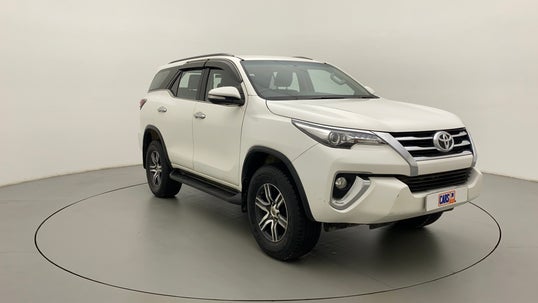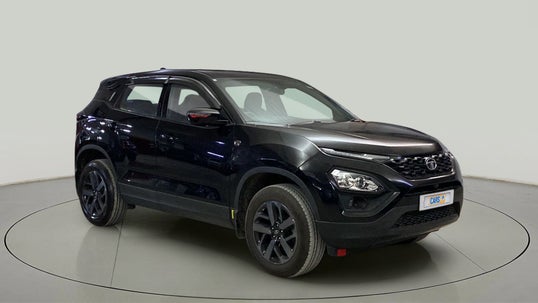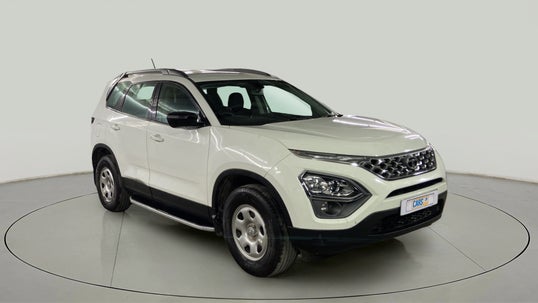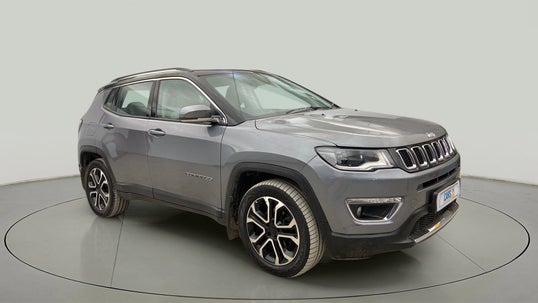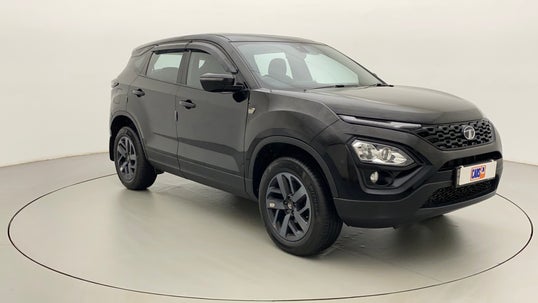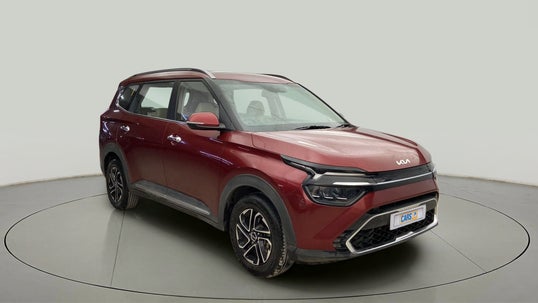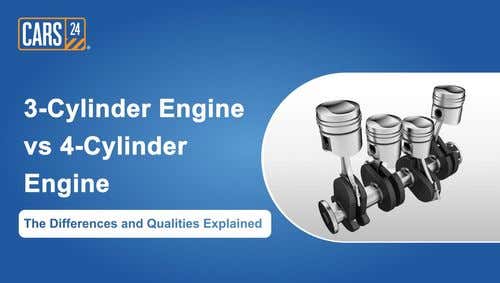Adaptive Cruise Control: The Ultimate Guide to Its Types, Safety and Advantages

Updated on: 3rd January, 2024 IST
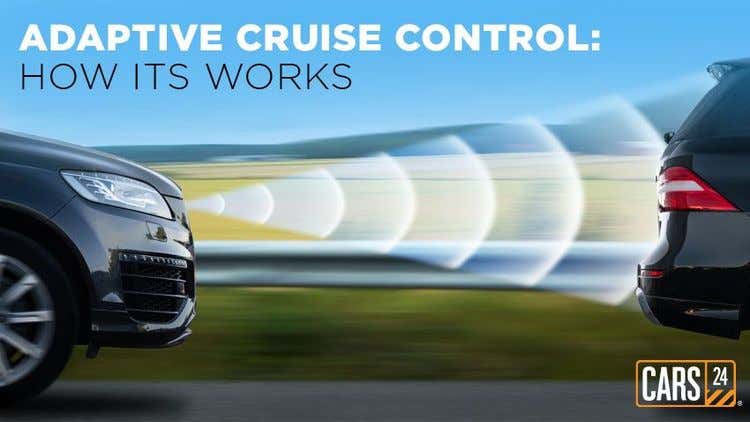
Back in 1886, when Carl Benz began producing the first commercial motor vehicles with internal combustion engines, it would have been hard to imagine that driving would one day become such an integral part of our daily lives.
Fast forward to the present day: whether it's our daily commute to work or the adrenaline and dopamine-fueled road trips, a significant chunk of our time is spent behind the wheel.
As we look forward to safer and more convenient driving experiences, automotive technology has made remarkable progress. At the forefront of this innovation is Adaptive Cruise Control (ACC).
In this blog, we will explore how Adaptive Cruise Control has helped realise these possibilities. ACC isn't just a feature; it's your driving assistant, flawlessly maintaining the ideal speed and ensuring a safe distance from the vehicle ahead. So, fasten your seatbelts and join us as we explore the inner workings of adaptive cruise control!
Table of Contents
- What is Adaptive Cruise Control (ACC)?
- How Does Adaptive Cruise Control Work?
- Types of Adaptive Cruise Control Systems
- Advantages of Adaptive Cruise Control
- Limitations of Adaptive Cruise Control
- Safety Features of ACC Systems
- Adaptive Cruise Control Vs Cruise Control
- Future Roadmap and Research Directions
- The Bottom Line
- FAQs
What is Adaptive Cruise Control (ACC)?
Adaptive cruise control, a safety feature, adjusts a vehicle's speed based on surrounding traffic conditions. It simplifies driving by autonomously adjusting your vehicle's speed to match traffic conditions, enhancing safety and convenience.
Here's how it works:
- The vehicle is equipped with a LiDAR/RADAR system at the front, continually monitoring the traffic around it
- When the system detects a slower-moving vehicle ahead, it triggers automatic braking to maintain a safe following distance
- If there are no obstacles within the system's range, it accelerates the vehicle to the preset cruise control speed
- The system takes care of acceleration and braking as needed, without requiring driver intervention
- Coupled with a collision avoidance system, it alerts the driver when the vehicle approaches an obstacle, initiating a slowdown
Read More : Top 12 Latest Car Technology Innovations of The Past Decade
How Does Adaptive Cruise Control Work?
Here's a breakdown of how adaptive cruise control works:
1. Sensors
Adaptive cruise control relies on sensors, often radar or lidar technology, placed at the front of the vehicle. These sensors calculate the distance between your vehicle and the one in front and track the relative speed of vehicles in the same lane.
2. Data Processing
The collected data is then sent to an embedded system within your car which determines the ideal speed to maintain a safe following distance from the vehicle ahead.
3. Cruise Mode
Adaptive cruise control takes over once you set your desired speed as a driver and select a target the following distance. It adjusts your vehicle's speed by either accelerating or decelerating as necessary to match the speed of the car ahead, which helps you maintain a consistent pace.
4. Adaptive Actions
If the road ahead clears up or the vehicle in front changes lanes, ACC smoothly accelerates your car back to its preset speed. Conversely, when traffic slows down, ACC decelerates your vehicle and, if needed, even applies the brakes to maintain a safe following distance.
Types of Adaptive Cruise Control Systems
Adaptive Cruise Control (ACC) adapts to diverse driving scenarios and requirements, making your journeys safer and more convenient.
Here's a breakdown of the types of ACC systems:
1. Active Adaptive Cruise Control
- Active ACC can bring your vehicle to a full stop when needed
- It smoothly accelerates your car when traffic starts moving again, perfect for stress-free stop-and-go situations
- Active ACC takes the hassle out of constant pedal work in heavy traffic conditions.
2. Standard Adaptive Cruise Control
- Standard ACC adjusts your vehicle's speed to match the one in front, though it won't stop your car entirely
- It offers assistance but expects some driver intervention, especially in stop-and-go traffic
- By maintaining a steady speed, it improves driving comfort and fuel efficiency
Also Read: Know about Electronic Stability Control (ESC)
Advantages of Adaptive Cruise Control
- Adaptive cruise control takes over speed and distance control reducing involvement and fatigue
- By autonomously adjusting speed and distance, it mitigates the risk of rear-end collisions, promoting safer driving
- Its smooth acceleration and deceleration patterns optimise fuel consumption, a boon for cost-conscious Indian drivers
- During complex traffic conditions, it manages speed and following distance smoothly, reducing the stress of stop-and-go driving
Limitations of Adaptive Cruise Control
- Adaptive cruise control relies heavily on sensors, which might be affected by adverse weather conditions such as heavy rain or snow, affecting its functionality
- Drivers should remain attentive and prepared to intervene, especially while navigating complex urban traffic
- A vehicle equipped with adaptive cruise control tends to fetch a higher resale value
Also Read: What is Cruise Control?
Safety Features of ACC Systems
Safety features are integral to ACC's design, offering added layers of protection and peace of mind for drivers in various situations. Manufacturers like BMW, Volvo, Audi, and Mercedes-Benz are trying to make cars safer to prevent accidents on the road.
Adaptive Cruise Control (ACC) prioritises safety with these essential features:
1. Collision Warning
ACC systems often include collision warning systems that alert the driver when a collision is about to occur
2. Braking Assist
Some ACC systems can apply the brakes if a collision risk is detected, aiding in accident prevention or reduction of impact severity
3. Lane Keeping Assist
ACC frequently collaborates with lane-keeping assist systems to help drivers maintain their lanes, enhancing overall road safety
Adaptive Cruise Control Vs Cruise Control
| Feature | Adaptive Cruise Control (ACC) | Cruise Control (CC) |
| Purpose | Maintains a set speed and distance between your car and the vehicle ahead | Maintains a set speed |
| Sensors | Radar or camera | Speed sensor |
| Operation | Adjusts your car's speed automatically to maintain a set distance between your car and the vehicle ahead | Adjusts your car's speed automatically to maintain a set speed |
| Advantages | Reduces driver fatigue, improves fuel efficiency, and can help prevent rear-end collisions | Reduces driver fatigue and improves fuel efficiency |
| Disadvantages | Can be expensive, can be affected by weather conditions, and may not work well in stop-and-go traffic | Can be affected by weather conditions |
Also Read: New Safety Norms for Cars in India in 2023
Future Roadmap and Research Directions
In the future, some research areas will actively drive ACC's evolution, making driving safer and more efficient as the technology continues to advance.
Machine learning can enhance ACC performance by creating algorithms that predict other vehicles' behaviour. Vehicle-to-Vehicle (V2V) communication can be improved allowing ACC systems to share speed and location information, improving overall performance.
Improving sensor accuracy will enable ACC systems to maintain safe distances even in challenging conditions like rain or fog. Developing ACC systems that can handle stop-and-go traffic is crucial for all-weather functionality.
Also Read: What is ADAS: Different Levels & How does ADAS work?
The Bottom Line
Adaptive cruise control is both fascinating and practical. It's not just a feature for tech enthusiasts; it's a valuable tool that enhances safety and driving comfort. As a beginner, understanding its mechanics, helps you to make the most of this innovation by prioritising cars equipped with adaptive cruise control.
Remember, adaptive cruise control is your co-pilot, not a replacement for your attention. Use it as a driving aid, and you'll experience smoother, safer journeys.
FAQs
Q. How does Adaptive Cruise Control differ from traditional Cruise Control?
ACC adjusts speed to maintain a safe following distance, while traditional Cruise Control maintains a fixed speed set by the driver.
Q. Can ACC work effectively in heavy traffic?
Yes, many ACC systems can manage speed and distance effectively in heavy traffic, reducing the driver's workload.
Q. Are there situations where ACC may not perform as expected?
ACC can be affected by adverse weather conditions, and drivers must remain attentive, especially in complex traffic scenarios.
Q. What safety measures are in place to prevent ACC-related accidents?
ACC systems often include collision warning and braking assist features to enhance safety.
Q. How does ACC contribute to reduced carbon emissions?
ACC's smooth driving patterns can optimize fuel efficiency, potentially reducing carbon emissions.
Q. Does adaptive cruise control use brakes?
Yes, ACC systems can apply the brakes if necessary to maintain a safe following distance or prevent collisions.
Recently Added Cars to Buy
Other Blogs
- Recent
- Featured
Popular Cities to Sell Car


